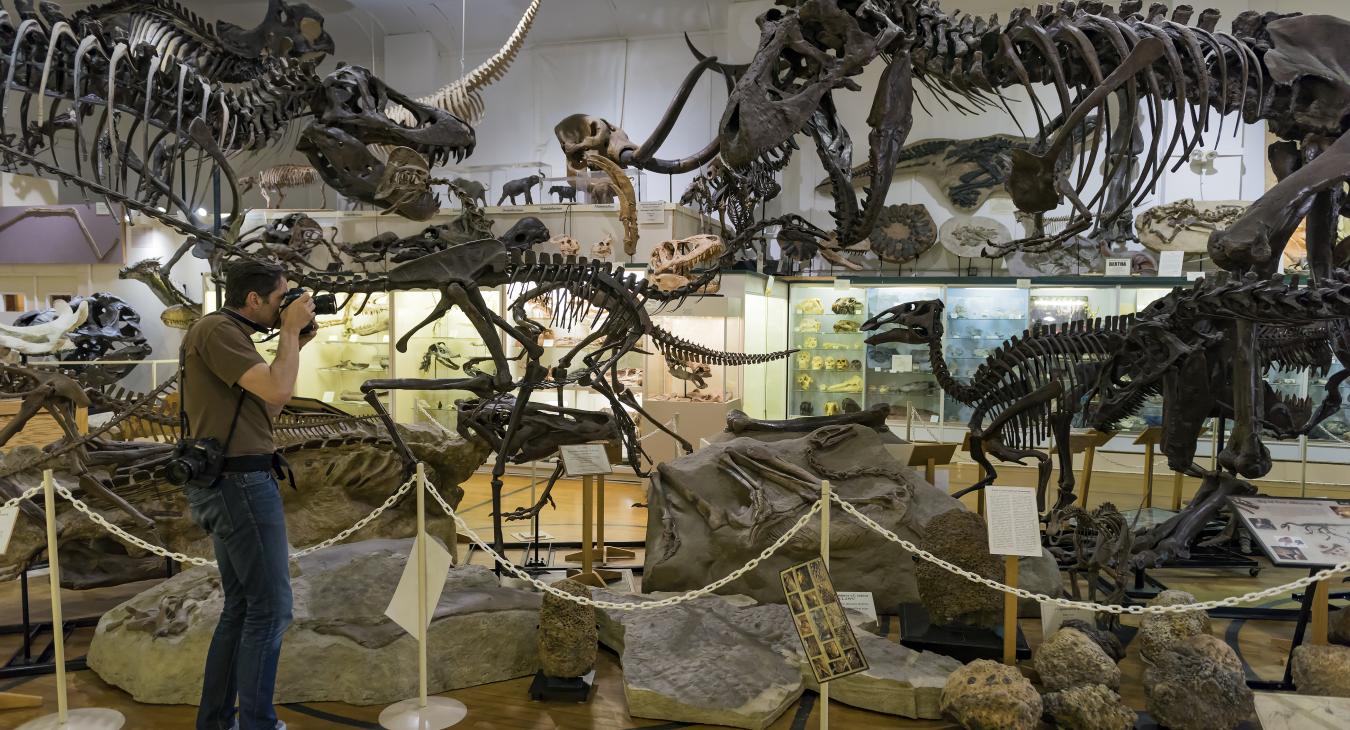When winter’s breath bites the Black Hills, many residents and visitors seek out indoor activities that warm their collective soul and satisfy their yearning to learn more about what makes this special slice of the world unusual and intriguing. For me, that’s often a museum, because most Black Hills communities revel in their past and present exhibits and collections that are often revealing and sometimes remarkable. Frankly, in travels to 80 countries around the globe, I’ve discovered that virtually every burg and hamlet retains a passion for their town, and celebrates history and mystery through its museum. But in the Black Hills, museums tout everything from giant T-Rexes and woolly and Columbian mammoths that once roamed the region to Native tribes that inhabited the plains and held the Hills scared, and the fur-traders, pioneers, miners, muleskinners and madams who explored and later settled here in the late 1880s.
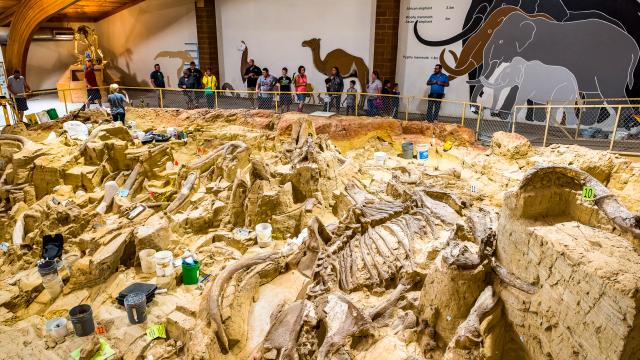
Ancient Giants and Dinosaur Discoveries
Here’s a quick look at some of our favorites: Where the Big Boys are Buried Long before man stepped foot in present-day South Dakota, huge beasts roamed the region. Some of them are still here. Step into The Mammoth Site at Hot Springs and you’ll discover another world, as well as the remains of more than 60 woolly and Columbian mammoths all left in situ, right where they have been unearthed over the past 40-plus years. In fact, it’s the largest concentration of mammoths you’ll find anywhere on the globe, and it’s been hailed as one of the most valuable fossil treasures known to mankind today.
This one-of-a-kind museum presents regular tours, even in winter, and the chance to stand next to a replica of one of these massive mammoths, which will make you feel quite small. And, you’ll come to understand why these beasts found their way into a giant sinkhole so long ago. New discoveries are made annually at The Mammoth Site. Among them, thanks to the U.S. Geological Survey and optically stimulated luminescence dating, scientists recently discovered that the site, thought to date back 26,000 years, is in actuality at least 140,000 years old, dating to the Ice Age. Just up the road in Hill City, the Black Hills Institute of Geological Research at 117 Main St., is a modest but impressive natural history museum offering a treasure trove of dinosaurs, fossils, minerals and collectibles from all over the globe.
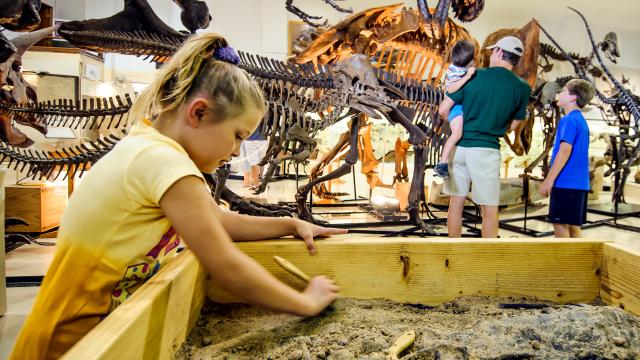
While the Institute specializes in providing professionally prepared fossils, fossil casts and mineral specimens to museums and researchers around the world, it also offers the layman a fascinating look into the science of paleontology and the excavations of two of its most remarkable discoveries – Sue and Stan – the most intact T-Rex fossil skeletons collected, prepared and mounted by the Institute’s founders and staff. In fact, the Hill City museum houses the world's most extensive research collection of T-Rex fossil material and dinosaur researchers from every continent have visited the Institute to study this material. The Institute's enormous fossil collection is recognized as one of the world's finest.
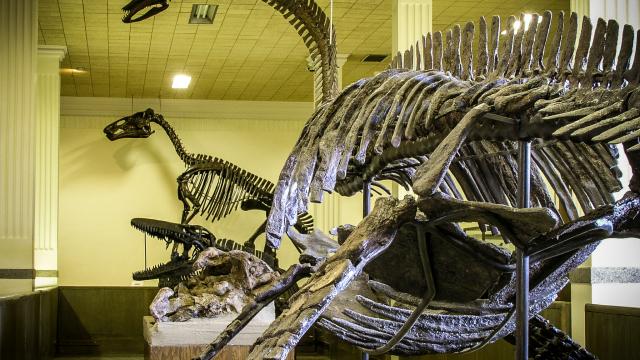
Geological Gems and Mining Tales
Those still wanting to learn more about the paleontological and geological history of the Black Hills should stop by the Museum of Geology on the campus of the South Dakota School of Mines & Technology at 501 E. St. Joseph St., in Rapid City. In addition to a gift shop and Kids’ Zone offering hands-on experiences for younger visitors, the museum has a captivating collection of mounted skeletons of dinosaurs, mammals, marine reptiles and fish, as well as rare fossils from the White River Badlands arranged in fascinating dioramas. Its Hall of South Dakota Minerals presents meteorites and an intriguing fluorescent mineral room that is guaranteed to capture your attention.
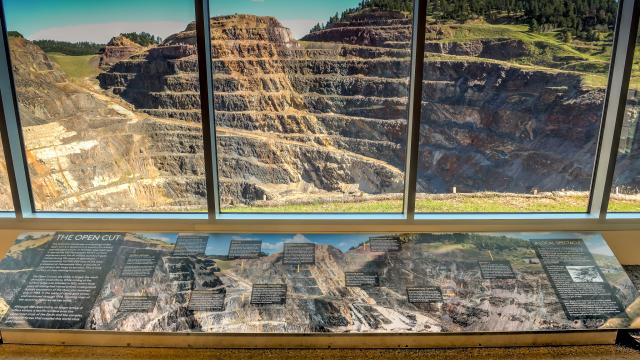
A Thorough Understanding Up the hill in Deadwood and Lead, several museums are worthy of attention. The Black Hills Mining Museum on Lead’s mile-high Main Street is dedicated to exploring the rich mining heritage of the Northern Hills in a place where gold mining was the number one industry for more than a century. The Sanford Lab Homestake Visitor Center, perched on the edge of Lead’s Open Cut, boasts fascinating exhibits, including a 3D model that illustrates the sheer scope of the Homestake Gold Mine, as well as the LUX detector, which searched for dark matter in the underground lab from 2013 to 2016. The museum explores the story of Lead, the 125-year history of the Homestake Gold Mine, and the groundbreaking science taking place today, nearly a mile underground at the Sanford Underground Research Facility. Seasonal trolley tours take visitors through the historic City of Lead to the Yates Hoistroom, which powers travel throughout the underground lab. There are often special events at the Visitor Center — from science talks to book signings to hands-on activities for kids — so check out their events calendar when planning your visit!
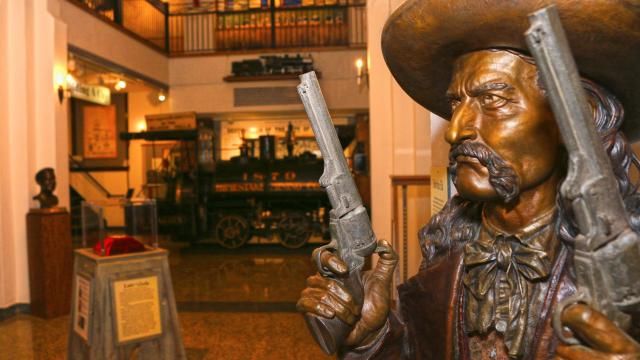
Historic Deadwood and Western Heritage
Wild & Woolly Once known as the wildest and woolliest town in the West, Deadwood is decidedly friendlier today. And for a town with about 1,100 residents, its collection of museums is exceptional. Deadwood’s famed Adams Museum, 54 Sherman St., holds secrets to the storied town’s past and a meaningful new exhibit, opened earlier this month, “Riches & Responsibilities: A Natural History of the Black Hills,” explores the natural environment of the region and the footprint left by human interactions.
But, in addition to thousands of historical artifacts ranging from Potato Creek Johnny’s massive 7.346 troy ounce gold nugget to a recording of Tootsie the singing coyote, the Adams Museum holds one of the most electrifying remnants of man’s earliest forays into the Black Hills – the Thoen Stone. Two brothers, Louis and Ivan Thoen, stumbled on the mysterious flat stone half-buried in dirt near Spearfish in 1887, and their find threw the entire timeline of gold discovery into question. After cleaning off the grime, an inscription on the stone read, “Came to these hills in 1833 seven of us, De Lacompt, Erza Kind, G.W. Wood, T. Brown, R. Kent, Wm. King, Indian Crow. All ded but me, Erza Kind. Killed by Ind(ians) beyond the high hill got all our gold June 1834. Got all the gold we could carry our ponys all got by the Indians. I hav lost my gun and nothing to eat and Indians hunting me.” While some have described the stone as suspicious, primarily because it was supposedly inscribed more than 40 years before the Custer Expedition confirmed the presence of gold in the Black Hills, other historians who traced the group of men to Independence, Mo., in 1883, contend it is legitimate.
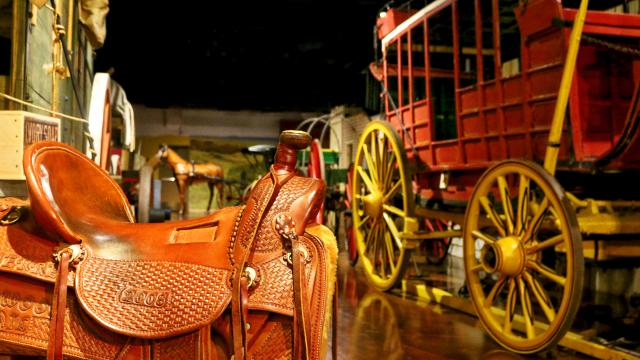
Nonetheless, no one argues about the legitimacy of the Days of ’76 Museum’s collection of horse-drawn carriages, wagons and stagecoaches. Included in the animal powered exhibit titled, “Deadwood: A Story of Movement and Change,” the impressive collection recaps the early transportation system that helped settle the American West in the 1880s. Three years in the making, the extraordinary exhibit may be viewed at the museum located at 18 Seventy-Six Drive.
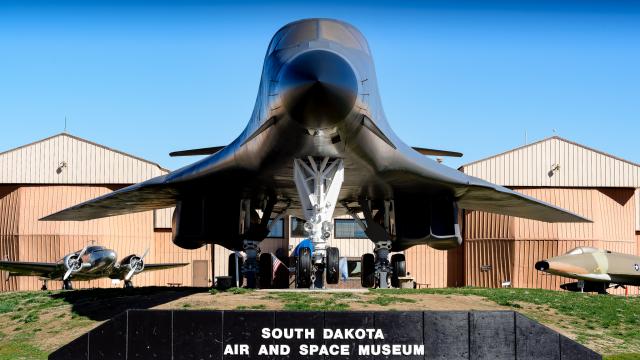
I’d be remiss if I didn’t mention three other favored museums in the Black Hills, including the High Plains Western Heritage Center, 825 Heritage Drive in Spearfish, replete with an extensive collection of western memorabilia and featuring some of the best South Dakota rodeo stars to ever compete, as well as a stagecoach, chuckwagon and homestead cabin; the Tri-State Museum, 415 5th Ave., in Belle Fourche, with a western collection and an impressive monument marking the town’s location near the Geographic Center of the United States; and the South Dakota Air & Space Museum, 2890 Davis Drive, just outside the main gate of Ellsworth Air Force Base, which allows visitors to get up close to more than 25 vintage aircraft.
Winter is upon us, but that’s no reason to huddle at home. Museums throughout the Black Hills are open and waiting for your visit.
- By Tom Griffith

